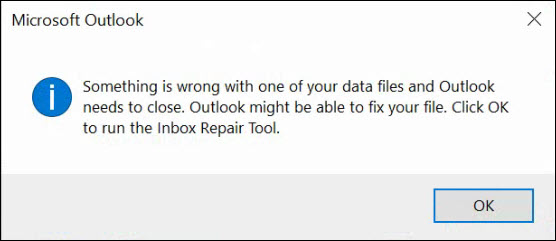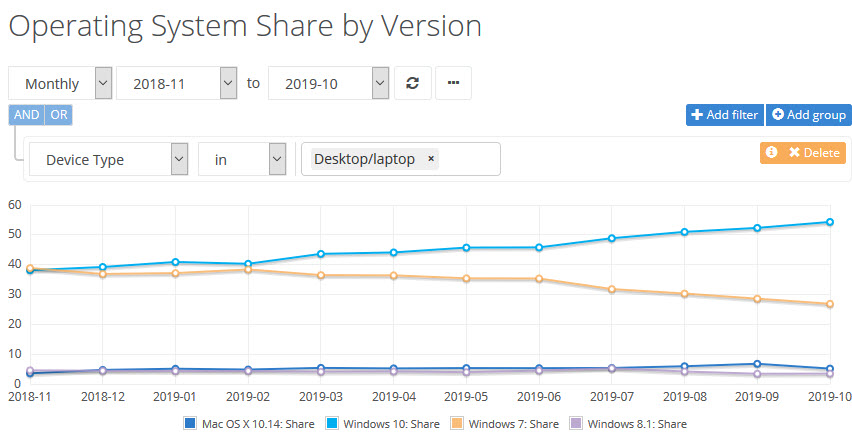Newsletter Archives
-
Windows 10 information hub
Zdnet’s Ed Bott has put together an article he calls – [url=https://www.zdnet.com/article/free-how-to-help-windows-10-ed-botts-tech-support-troubleshooting-guide]The ultimate Windows 10 information hub: Everything you need in one place[/url]. Ed says if you are “Looking for technical information about Windows 10 releases, new features, known issues, troubleshooting, and tech support?” start there.
The page is updated frequently. It has links to many of Ed’s articles on various aspects of Windows 10. It also has links to many Microsoft support articles and tools.
All-in-all it is a good place to start Windows 10 information. Saving a bookmark to this article might be a time-saver in the future
-
Is the Disappearing Profile bug still alive and well?
This morning I logged in to my Win10 Pro v2004 VM, and, after entering my password, ran into the rolling circle of dots that took minutes and a message “Preparing Windows.”It opened into a desktop with a “We can’t log you in to your account” box in the middle of the screen and a desktop that was not mine.Note, there were no obvious updates in the last few days, no other indication that anything was going on.I shut down (not restarted) the VM – don’t have Fast Startup, sleep, or hibernation. In fact, I have removed the hiberfile. So no hangovers.Restarted the VM, logged in again, and everything was normal. My Profile was back.Seems the disappearing profile bug is still alive and well. And it isn’t necessarily precipitated by an (obvious) update.
Has anyone else seen this lately? Tell us your version of Win10 (v1809, v1903, v1909, or v2004) and the Edition (Home or Pro). -
Debilitating “Outlook needs to close” bug linked to a likely bad Windows cumulative update
Don’t you just love it when Microsoft fails to test its latest version of Outlook with its latest version of Windows?

Of course, Outlook can’t fix your PST file – because there’s nothing wrong with it.
We have a few more clues about the bug… and it’s likely that Windows is at fault.
Details in Computerworld Woody on Windows.
Sneak peek: I believe that the bug occurs on systems that:
- Use PST, not OST, files, AND
- Run Microsoft 365 version 2005 Current Channel release 12827.20268 (from June 2) or Current Channel release 12827.20336 (from June 9), AND
- Have installed the June 2020 Win10 cumulative update (KB 4557957 for version 2004, KB 4560960 for versions 1903 or 1909, or KB 4561608 for version 1809).
-
Troubleshooting a failed Windows 10 upgrade or feature update
With the Windows 7 support expiration and more people working from home, an upgrade to Windows 10 is coming into focus for people who may have been avoiding it. This article covers both Windows 10 upgrade and feature update failures. There are a number of troubleshooting tips and tools. See Ed Bott’s article on ZDNet Windows 10 upgrade failed? Use these 5 tools to find the problem and fix it fast.
-
Win7 share declining slowly, Edge still in the doldrums

According to NetMarketShare, Win10 share usage is up from 52% in September to 54% in October. Win7 share went from 29% to 27%.

Statcounter says that Chrome went from 62 to almost 63% usage share, while Edge went from 3.1 to 3.0%.
All numbers subject to the usual disclaimers – based on flawed sampling, it ain’t gospel, more like reading tea leaves, and all that really matters is long-term trends.
-
Windows Release Health Dashboard now live
Some time ago Microsoft announced they would be more transparent about the status of Windows 10 regarding known issues and fixes. With the release of Windows 10 version 1903 aka the Windows 10 May 2019 update, the status pages are now live. In the release announcement, [url=https://blogs.windows.com/windowsexperience/2019/05/21/how-to-get-the-windows-10-may-2019-update/#TJG97dV3EjB3IhBo.97]How to get the Windows 10 May 2019 Update[/url], these pages are referred to as the Windows release health dashboard.
Be aware that the known issues are only the ones Microsoft has acknowledged. There will always be more than what Microsoft confesses to. In any event, these pages have the potential to be an invaluable resource and be one of the first places to check when problems occur.
Here’s a link to the top level page – [url=https://docs.microsoft.com/en-us/windows/release-information]Windows 10 release information[/url].
Here’s a link to the Windows 10 version 1903 status – [url=https://docs.microsoft.com/en-us/windows/release-information/status-windows-10-1903]Windows 10, version 1903 and Windows Server, version 1903[/url].
-
Win10 updating terminology is changing again – but this time maybe it’s tied to a major improvement
In retrospect, I’m not convinced the terminology change is tied to anything worthwhile.
Details in Computerworld Woody on Windows.
Here’s my earlier, rosier take…..
******************************************
At least I have my fingers crossed.
First, John Wilcox announced on the Windows IT Pro blog:
IF YOU USE WINDOWS UPDATE FOR BUSINESS: Beginning with Windows 10, version 1903 (the next feature update for Windows 10), the Windows 10 release information page will no longer list SAC-T [Semi-Annual Channel Targeted] information for version 1903 and future feature updates. Instead, you will find a single entry for each new SAC release. In addition, if you are using Windows Update for Business, you will see new UI and behavior to reflect that there is only one release date for each SAC release. If you use System Center Configuration Manager, Windows Server Update Services (WSUS), or other management tools, there will now only be one feature update published to WSUS, and this will occur at the time of release.
That’s a major change to the meaning of SAC-T. I’ve long used the promotion of a Win10 version to SAC (from SAC-T) as an indication that it may be ready, in a few months, to install. Wilcox shows a screenshot of the new Win10 version 1903 Windows Update Advanced options pane, and it’s substantially different from what we’re seeing now.
Reason to be cynical – Oh gawd, they changed the terminology again.
Reason to be hopeful – maybe this means that when a new Win10 version is released it’ll be, you know, tested.
Combine that with more unexpected news. People in the Windows Insider Program Skip Ahead ring were expecting to start testing version 19H2 (for lack of a better term, probably destined to become Win10 version 1909). But earlier today, Microsoft released Skip Ahead build 18336. According to Dona Sarkar and Brandon LeBlanc:
These builds are from the 20H1 development branch. Some things we are working on in 20H1 require a longer lead time. We will begin releasing 19H2 bits to Insiders later this spring after we get 19H1 nearly finished and ready; once 19H1 is “nearly finished and ready” we’ll also use the Release Preview ring for previews of drivers and quality updates on 19H1.
Which is an incredibly convoluted way to run a beta program, unless….
… unless the talk of 19H2 is a smokescreen, and Microsoft’s finally going to start releasing new versions of Win10 every year.
Hey, a guy can hope.


